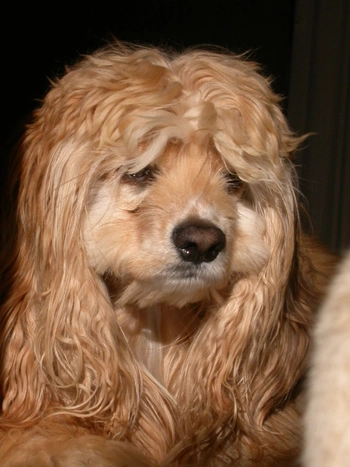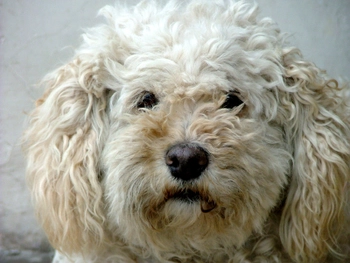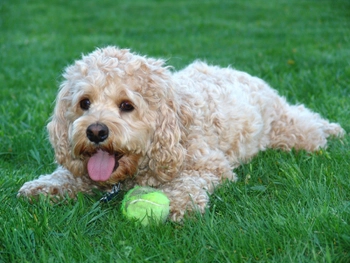The Top 10 Hypoallergenic Dog Breeds: Finding Your Perfect Furry Companion Without the Sneeze
The Top 10 Hypoallergenic Dog Breeds: Finding Your Perfect Furry Companion Without the Sneezes
Are you a dog lover who suffers from allergies? Don’t worry, you can still find your perfect furry companion without the sneezes! Introducing the top 10 hypoallergenic dog breeds, specially bred to minimize allergic reactions in sensitive individuals. These adorable and allergy-friendly canines are a dream come true for those who love dogs but hate the itchy eyes and runny noses that often come with them.
From the poodle’s curly coat to the bichon frise’s fluffy charm, these hypoallergenic breeds offer a variety of sizes, temperaments, and personalities to suit every dog lover’s preferences. Whether you’re looking for a loyal lap dog or an energetic playmate, these hypoallergenic breeds will steal your heart without triggering your allergies. So, say goodbye to sneezing fits and embrace the joy of having a four-legged friend by your side. Let’s explore the top 10 hypoallergenic dog breeds together and find your perfect match!
Understanding Hypoallergenic Dog Breeds
Hypoallergenic dog breeds are specifically bred to produce fewer allergens compared to other dog breeds. While no dog breed is completely hypoallergenic, these breeds are known to cause fewer allergic reactions in individuals who are sensitive to pet dander. Pet dander, urine, and saliva are common allergens that can trigger allergic reactions such as sneezing, itching, and coughing. Hypoallergenic dog breeds produce fewer allergens because they have hair instead of fur, which reduces the amount of dander they shed. Additionally, these breeds tend to have less oil on their skin, minimizing the spread of allergens. It’s important to note that individual reactions to allergens can vary, so it’s recommended to spend time with a specific hypoallergenic breed before making a decision.
Hypoallergenic dog breeds are a popular choice for individuals with allergies who still want to experience the joy of owning a dog. These breeds offer the best of both worlds – the companionship and loyalty of a furry friend without the discomfort of allergic reactions. By understanding the factors that make a dog breed hypoallergenic, you can make an informed decision and find the perfect four-legged companion to join your family.
Common Allergens in Dogs and How They Affect Allergy Sufferers
Allergies to dogs are usually caused by proteins found in their dander, urine, and saliva. When an allergic individual comes into contact with these allergens, their immune system reacts by releasing histamines, which triggers the symptoms of an allergic reaction. These symptoms can range from mild to severe and may include sneezing, runny nose, itchy and watery eyes, coughing, and even asthma attacks in extreme cases.
Dog dander, which consists of tiny flakes of dead skin, is the most common allergen associated with dogs. Dander can easily become airborne and circulate in the environment, making it difficult for allergy sufferers to avoid exposure. Additionally, dog urine and saliva can also contain allergenic proteins that can cause allergic reactions. It’s important to note that even “hypoallergenic” dog breeds can still produce some allergens, although in smaller quantities compared to other breeds. Therefore, it’s crucial to spend time with a hypoallergenic dog and observe any potential allergic reactions before bringing them into your home.
Understanding the common allergens in dogs and their effects on allergy sufferers is essential when considering a hypoallergenic dog breed. By being aware of these allergens, you can take the necessary precautions to minimize allergic reactions and ensure a harmonious coexistence with your furry friend.
The Benefits of Owning a Hypoallergenic Dog
Owning a hypoallergenic dog can bring numerous benefits to both allergy sufferers and dog lovers alike. Here are some of the advantages of having a hypoallergenic dog:
1. **Reduced Allergic Reactions:** The primary benefit of owning a hypoallergenic dog is the reduced risk of allergic reactions. These breeds produce fewer allergens, making them a suitable choice for individuals with allergies.
2. **Minimal Shedding:** Hypoallergenic dogs have hair instead of fur, which means they shed less dander. This not only reduces the amount of allergens in the environment but also makes grooming and cleaning easier.
3. **Cleaner Home Environment:** Since hypoallergenic dogs shed less, there will be fewer pet hairs and dander floating around your home. This can lead to a cleaner and more allergen-free living space, providing relief for allergy sufferers.
4. **Great for Indoor Living:** Hypoallergenic dog breeds are often well-suited for apartment or condo living. Their minimal shedding and lower allergen production make them ideal for individuals who spend a lot of time indoors.
5. **Lovely Companions:** Hypoallergenic dog breeds are known for their friendly and affectionate nature. They make wonderful companions and are well-suited for families, individuals, or seniors looking for a loyal and loving pet.
The benefits of owning a hypoallergenic dog extend beyond just minimizing allergic reactions. These breeds offer a range of positive attributes that can enhance your overall quality of life. From a cleaner home environment to the joy of having a loving companion, hypoallergenic dogs can bring immeasurable happiness to their owners.
Factors to Consider When Choosing a Hypoallergenic Dog Breed
When choosing a hypoallergenic dog breed, it’s important to consider several factors to ensure compatibility with your lifestyle and allergy sensitivities.
1. **Allergic Reactions:** Spend time with different hypoallergenic breeds and observe any allergic reactions you may experience. Everyone reacts differently to allergens, so it’s crucial to choose a breed that doesn’t trigger your allergies.
2. **Size and Activity Level:** Consider the size and activity level of the breed. Some hypoallergenic breeds are small and require less exercise, while others are more energetic and need plenty of physical and mental stimulation. Choose a breed that matches your lifestyle and energy level.
3. **Grooming Requirements:** Hypoallergenic dog breeds often require regular grooming to prevent matting and maintain their hypoallergenic qualities. Consider your willingness to invest time and effort in grooming or the cost of professional grooming services.
4. **Temperament and Personality:** Different breeds have distinct temperaments and personalities. Research the characteristics of hypoallergenic breeds to find one that aligns with your preferences and lifestyle.
5. **Family Compatibility:** If you have children or other pets, consider the breed’s compatibility with your family dynamics. Some hypoallergenic breeds are more tolerant and gentle, making them ideal for families with young children or other animals.
By considering these factors, you can narrow down your choices and find a hypoallergenic dog breed that suits your lifestyle and allergy sensitivities. It’s important to remember that each breed has its own unique qualities, so take the time to research and interact with different breeds before making a decision.
Top 10 Hypoallergenic Dog Breeds – Characteristics and Traits
1. **Poodle:** Poodles come in three sizes – standard, miniature, and toy. They have a curly, hypoallergenic coat that doesn’t shed much. Poodles are highly intelligent, trainable, and make excellent family pets.
2. **Bichon Frise:** Bichon Frises have a fluffy, hypoallergenic coat that requires regular grooming. They are known for their friendly and affectionate nature, making them great companions for individuals and families.
3. **Maltese:** Maltese dogs have a silky, hypoallergenic coat that grows continuously. Regular grooming is necessary to prevent matting. They are small, playful, and make wonderful lap dogs.
4. **Shih Tzu:** Shih Tzus have a long, silky coat that requires regular grooming. They are known for their friendly and outgoing nature, making them great family pets.
5. **Yorkshire Terrier:** Yorkshire Terriers have a silky, hypoallergenic coat that requires regular grooming. They are small, energetic, and make excellent companions for individuals or families.
6. **Schnauzer:** Schnauzers come in three sizes – giant, standard, and miniature. They have a wiry, hypoallergenic coat that requires regular grooming. Schnauzers are intelligent, loyal, and make great watchdogs.
7. **Portuguese Water Dog:** Portuguese Water Dogs have a curly, hypoallergenic coat that requires regular grooming. They are known for their intelligence, athleticism, and love for water activities.
8. **Havanese:** Havanese dogs have a soft, hypoallergenic coat that requires regular grooming. They are friendly, adaptable, and make great companions for individuals or families.
9. **Chinese Crested Dog:** Chinese Crested Dogs come in two varieties – hairless and powderpuff. The hairless variety is hypoallergenic, while the powderpuff has a long, silky coat. They are known for their affectionate and playful nature.
10. **West Highland White Terrier:** West Highland White Terriers have a wiry, hypoallergenic coat that requires regular grooming. They are energetic, confident, and make excellent companions for individuals or families.
Each of these hypoallergenic dog breeds has its own unique characteristics and traits. Take the time to research and interact with different breeds to find the one that best matches your preferences and lifestyle.
Training and Grooming Tips for Hypoallergenic Dog Breeds
Training and grooming are essential aspects of owning a hypoallergenic dog breed. Here are some tips to ensure your furry companion is well-behaved and well-groomed:
1. **Start Training Early:** Begin training your hypoallergenic dog as soon as you bring them home. Consistency, positive reinforcement, and patience are key to successful training.
2. **Socialize Your Dog:** Expose your dog to various people, animals, and environments from a young age. This will help them develop good social skills and be more comfortable in different situations.
3. **Regular Grooming:** Hypoallergenic dog breeds often require regular grooming to prevent matting and maintain their hypoallergenic qualities. Brush their coat daily, bathe them regularly, and trim their hair as needed. Consider professional grooming services if you’re not comfortable or experienced in grooming.
4. **Nail Trimming:** Trim your dog’s nails regularly to prevent them from becoming too long and causing discomfort. Use proper nail clippers designed for dogs and be cautious not to cut into the quick.
5. **Dental Care:** Maintain your dog’s dental hygiene by brushing their teeth regularly or providing dental chews or toys. This helps prevent dental issues and keeps their breath fresh.
6. **Positive Reinforcement:** Use positive reinforcement techniques such as treats, praise, and play to reward good behavior. This encourages your dog to repeat desirable behavior and strengthens your bond.
Training and grooming are ongoing responsibilities when owning a hypoallergenic dog breed. By investing time and effort into these areas, you can ensure your dog is well-behaved, healthy, and happy.
Finding a Reputable Breeder or Adoption Center for Hypoallergenic Dogs
When looking for a hypoallergenic dog, it’s crucial to find a reputable breeder or adoption center to ensure the health and well-being of the dog. Here are some tips to help you find a reliable source:
1. **Research Breeders:** Look for breeders who specialize in hypoallergenic dog breeds and have a good reputation. Ask for references, visit their facilities, and ensure they prioritize the health and welfare of their dogs.
2. **Check Certifications:** Reputable breeders often have certifications from recognized kennel clubs or breed organizations. These certifications indicate that the breeder adheres to certain standards of breeding practices.
3. **Ask for Health Records:** Request health records of the dog you’re interested in. This includes vaccination records, genetic testing, and any other relevant health information.
4. **Visit Adoption Centers:** If you’re considering adopting a hypoallergenic dog, visit local adoption centers and rescue organizations. These centers often have hypoallergenic breeds available for adoption, providing a loving home for dogs in need.
5. **Meet the Dog:** Spend time with the dog you’re interested in before making a decision. Observe their behavior, interact with them, and ensure they are a good fit for your family and lifestyle.
Finding a reputable breeder or adoption center is crucial to ensure you’re bringing home a healthy and well-cared-for hypoallergenic dog. Take the time to do your research, ask questions, and make an informed decision.
Health Considerations for Hypoallergenic Dog Breeds
Hypoallergenic dog breeds are generally healthy, but they may still be prone to certain health conditions. It’s important to be aware of these potential issues and take proactive measures to keep your dog healthy. Here are some common health considerations for hypoallergenic dog breeds:
1. **Allergies:** Although hypoallergenic breeds produce fewer allergens, they can still develop allergies themselves. Monitor your dog for signs of allergies such as itching, redness, or recurrent ear infections, and consult with a veterinarian if necessary.
2. **Skin and Coat Issues:** Some hypoallergenic breeds are prone to skin and coat issues such as dry skin, dermatitis, or allergies. Regular grooming, a balanced diet, and proper hygiene can help prevent these issues.
3. **Dental Problems:** Small hypoallergenic breeds, in particular, may be prone to dental problems such as tooth decay or gum disease. Practice good dental hygiene by brushing your dog’s teeth regularly and providing dental treats or toys.
4. **Eye Conditions:** Certain hypoallergenic breeds may be susceptible to eye conditions such as cataracts or dry eye. Regular veterinary check-ups and proper eye care can help detect and manage these conditions.
5. **Luxating Patella:** Some hypoallergenic breeds, including Poodles and Yorkshire Terriers, may be prone to luxating patella, a condition where the kneecap dislocates. Regular exercise, maintaining a healthy weight, and proper care can help minimize the risk of this condition.
Regular veterinary care, a balanced diet, exercise, and proper grooming are essential for maintaining the health of a dog.
Target Keyword: hypoallergenic dog breeds




